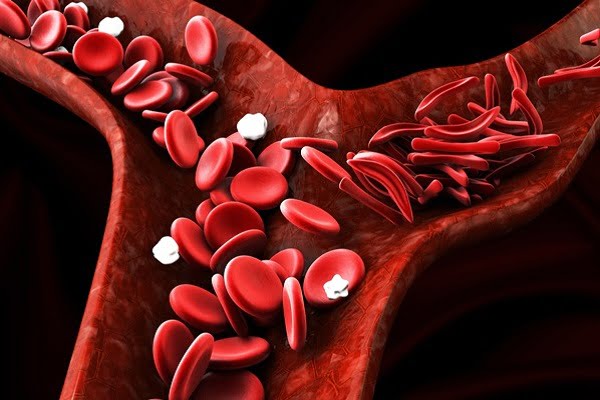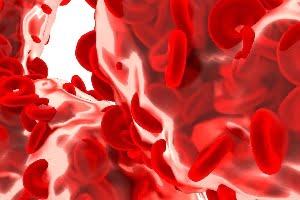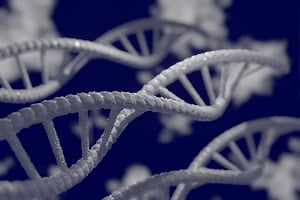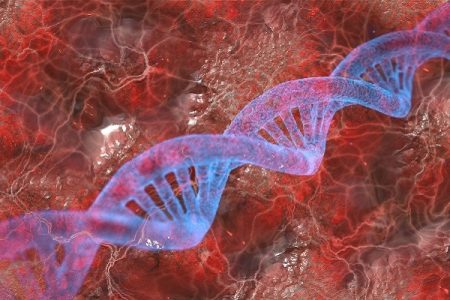
Beta Thalassemia
Thalassemia is a hereditary disorder which affects the production of normal hemoglobin. Thalassemia results in a number of different forms of anemia. The severity and type of anemia depends on the number of genes which get affected. Beta thalassemia is one of the important type of thalassemia which is caused by mutations in the beta chain of the hemoglobin molecule.
Beta thalassemia has been classified into two types depending on the severity of symptoms. One is thalassemia major or also called as Cooley’s anemia and the other is thalassemia intermedia. Among these two types, thalassemia major is more severe.
Beta Thalassemia Major or Cooley’s Anemia
Beta thalassemia major is caused due to deletions in both beta chains of hemoglobin. It is one of the most severe types of beta thalassemia. Patients suffering from Cooley’s anemia need frequent blood transfusions and are not able to survive a normal lifespan. During the first 1 to 2 years of life, they suffer from much health related issues like having pale skin, fussiness, poor appetite, and frequent infections. If the condition is not treated, patients suffer from enlarged spleen, liver, and heart and many bone-related issues such as thin, brittle, and deformed bones. There is an accumulation of iron in the heart and other organs of the patients, which increases the risk factor of heart failure for some patients in their teens or early twenties.
The full or classic description of beta thalassemia major or Cooley’s anemia tends to primarily occur in developing countries. Although beta thalassemia major is a chronic and lifelong illness, but most individuals can live a happy life if they follow the current recommended treatments.
Cooley’s anemia is often associated with severe anemia which causes many symptoms in the patients such as fatigue, weakness, shortness of breath, dizziness, headaches, and yellowing of the skin, mucous membranes and whites of the eyes (jaundice). Affected infants often fail to thrive like they are unable to grow and gain weight as expected according to their age and gender. Major health problems in infants caused by the disease are feeding problems, diarrhea, irritability or fussiness, recurrent fevers, abnormal enlargement of the liver (hepatomegaly), and the abnormal enlargement of the spleen (splenomegaly).
Splenomegaly often causes abdominal enlargement or swelling and may be sometimes associated with an overactive spleen (hypersplenism), which is a condition that occurs due to build up of too many blood cells that get destroyed within the spleen. Hypersplenism causes anemia in individuals affected with beta thalassemia resulting in low levels of white blood cells, increasing the risk of infection, and low levels of platelets, which can ultimately cause prolonged bleeding.
Beta thalassemia major causes expansion of bone marrow, where most of the blood cells are produced in the body. The bone marrow expands because it tries to compensate for chronic anemia. This abnormal expansion makes the bones thinner, wider and brittle. Affected bones also lead to many bone deformities particularly in the long bones of the arms and legs and certain bones of the face. Affected facial bones can result in typical facial features like an abnormally prominent forehead (frontal bossing), full cheek bones (prominent malar eminence), a depressed bridge of the nose, and overgrowth (hypertrophy) of the upper jaw (maxillae), exposing the upper teeth. Besides, the affected bones are at an increased risk of fractures, particularly the long bones of the arms and legs. Some affected individuals also develop ‘knock knees’ (genu valgum), a condition in which the legs bend inward so that when a person is standing, the knees touch even when the ankles and feet are not touching.
Complications in Cooley’s Anemia
In cooley’s anemia, there occurs many complications even after the treatment. One of the complications is the buildup of iron in the body called as iron overload. Iron overload often results from the blood transfusions given to individuals with beta thalassemia major. Excess iron in the body due to Iron overload results in tissue damage and impaired function of affected organs such as the heart, liver and endocrine glands. Iron overload damages the heart causing abnormal heart rhythms, inflammation of the pericardial membrane of the heart (pericarditis), enlargement of the heart and disease of the heart muscle (dilated cardiomyopathy). These heart-related complications can often progress to life-threatening conditions such as heart failure.
If excess iron gets accumulated in the liver, it may cause scarring and inflammation of the liver (cirrhosis) and high pressure of the main liver vein (portal hypertension). Endocrine gland involvement can result in insufficiency of various glands such as the thyroid (hypothyroidism) and, in rare cases, diabetes mellitus. Iron overload can also lead to growth retardation and the failure or delay of sexual maturation in the patients.
Other complications found in Cooley’s anemia include masses that form because of blood cell production outside of the bone marrow (extramedullary hematopoiesis). These masses are primarily formed in the spleen, liver, lymph nodes, chest, and spine and can potentially cause compression of nearby structures and a variety of other problems. In some individuals leg ulcers are developed, which can increase the risk of blood clot formation within a vein (venous thrombosis) and reduced bone mineralization resulting in brittle bones that are prone to fracture (osteoporosis).
Treatment for Beta Thalassemia Major or Cooley’s Anemia
Specific treatment for beta thalassemia major or Cooley’s anemia can be usually determined by the child’s doctor based on the following:
- Age, overall health, and medical history
- Extent of the disease
- Child’s tolerance for specific medications, therapies and procedures
- Expectations for the course of the disease
Common treatments used in beta thalassemia include:
- Regular blood transfusions
- Medications (to reduce amount of iron in the body, called chelation therapy)
- Surgical removal of the spleen
- Folic acid supplements
- Monitoring of the gallbladder, liver, and bone density
- Avoiding iron supplements
- Bone marrow transplantation
- Gene therapy






